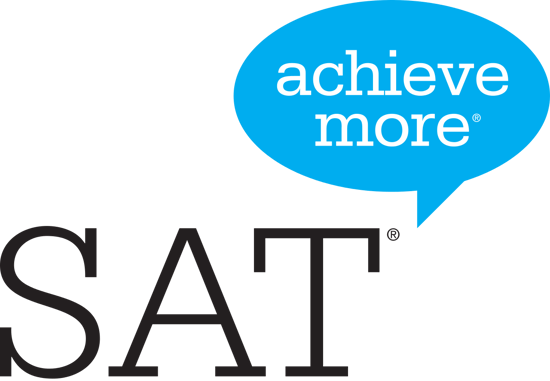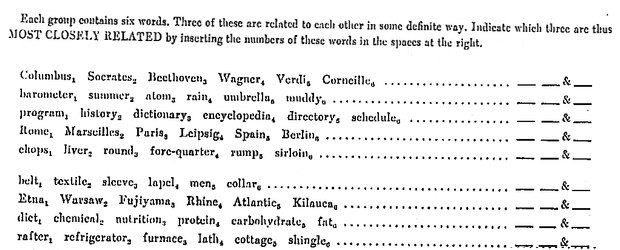
The SAT was first introduced in 1926, and since then it has continued to be a major test for college admissions standardized testing.
But what does SAT actually stand for?. To answer that question, we have to look more closely at the history of the SAT. The truth is that the name of the test has changed four times over the past 90 years!
Knowing how the name of the SAT has changed can help you better understand the significance of this major test for college admissions. The reasons for changing the name of the SAT point to controversies and scandals about the test that have affected how the test is perceived by colleges. Continue reading to find more about the history of the SAT and the reasoning behind the name.
The Very Beginning: 1899
The College Board (formerly the College Entrance Examination Board) was organized at Columbia University on December 22, 1899. The board consisted of 12 universities and three private high schools, including well-known schools like Columbia, Princeton, and Cornell. The goal of this board was to agree on a set of standards that should be taught in high school and to create a test that could assess how well students were prepared in these subjects.
Before this point, there really was no reliable way to compare students to each other on a national level. Students from different schools would have different grades and different teachers, and it would be hard for a college to reliably compare students to each other. The College Board aimed to solve this problem by establishing standardized learning objectives and clear methods for assessing students’ readiness for college admission.
So what subjects did the College Board want to teach and assess? In the early years of the College Board, Botany, Chemistry, English, French, German, Greek, History, Latin, Mathematics, Physics, and Zoology were deemed the core subjects. Since that time, Botany and Zoology have been merged into Biology, and Greek and Latin are clearly no longer popular languages!
The very first test given by the College Board was in 1901, but this was a prototype essay test. They retooled the test for a while, and then, in 1926, came out with the very first SAT.

In 1926, the SAT was launched...and so was the National Broadcasting Company, which is now known as NBC!
1926: The Scholastic Aptitude Test
The SAT began life as an acronym: the Scholastic Aptitude Test. To be precise about what this name means, let's define the words:
Scholastic : "of or concerning schools and education; academic"
So we know that this test relates to the student's education in some way. Now, let’s define “aptitude”:
Aptitude : "a natural ability to do something; talent"
Whoa, wait a second. "Natural ability" and "talent" refer to a quality that you're born with and don't have the ability to change. Aptitude implies that some people are born good at certain things, others aren't so lucky, and that's how they'll stay for the rest of life.
Yes, that's right - the SAT was originally designed to be more like an IQ test. The suggestion was that people with higher IQs were more likely to succeed in college and in life. Based on that notion, the College Board believed that you couldn't score higher on the test by preparing. The questions on the test were specifically designed NOT to test things that you had already learned in school. That's what lies behind the loaded term "aptitude."
This also explains part of why the SAT is such a weird test and tests questions that you've never seen before in school. Even now, over 100 years since the College Board was founded, high school students are still feeling the legacy of the test.
For Fun: What was tested on the 1926 SAT?
The original SAT looked very different from the SAT we're used to today. Verbal skills tested included definitions, antonyms, and analogies, while math questions included number series and logical inference. Test-takers were given around 90 minutes to answer 315 questions.
Just for fun, try a few sample questions from the 1926 SAT:


Despite its flaws, the introduction of the SAT was actually a huge game-changer for high school students. In the past, elite colleges would select from prestigious high schools that were known for serving wealthy, white families. The SAT enabled colleges to compare students across the country to each other and identify promising students that didn't fit the traditional student mold. Given these benefits, more and more colleges began requiring the SAT as part of their admissions.
But remember how this was meant to be an "aptitude" test? Over time, that became an issue. People began pointing out flaws in the claim that the SAT only measures students’ aptitude.
First, test prep companies began showing that they could improve test scores through dedicated test prep (which still holds true for today's SAT prep programs). This means that the SAT doesn't test purely innate ability - you can learn to get better on this test.
Second, ideas around education began changing. Whereas people once thought academic ability had to do with natural talent, we now know it has a lot to do with environmental factors and individual character.
With all this controversy, the College Board decided to change the test name again, this time calling it the Scholastic Assessment Test.

In 1993, the College Board renamed the SAT again (sorta). This was the same year Nelson Mandela won the Nobel Peace Prize.
1993: Scholastic Assessment Test
Facing pressure behind the "aptitude" part of the SAT, the College Board renamed the test to the Scholastic Assessment Test in 1993. Specifically, what we know as the SAT was called the SAT I: Reasoning Test. The subject tests were called SAT II: Subject Tests.
This shift was in response to the faulty idea that preparation for these tests would not improve scores. It was clear that test prep could improve SAT scores, and suggesting otherwise was misleading. That’s why the word “aptitude” was removed from the name of the SAT in 1993.
At this point, the College Board decided that the SAT should better assess student growth in "high school curricula" and test the skills used in college and career work.
But wait - doesn't "assessment" also mean "test?" So this would be like calling the SAT the Scholastic Test Test.
Partly for this reason and others, the College Board decided to issue a new statement: SAT no longer means anything.
1997: SAT No Longer Means Anything
As of 1997, SAT is no longer an acronym and the name does not stand for anything. Here's an official comment from the College Board about this change:
But why keep the SAT name at all if it doesn't mean anything? By the time the name was changed again in 1997, millions of students were taking the SAT. Generations of students recognized the SAT name and it was a fixture in the culture of college admissions. Changing the name - say, to the ART, or "Academic Reasoning Test" - would be confusing for students, parents, and colleges.
So what does SAT stand for? Now you know - the SAT no longer stands for anything. It escaped the original problems involved in calling it an "aptitude" test and now avoids the redundancy in "assessment test" by simplifying the name to just SAT.
Today, the SAT continues reinventing itself to become a better test. Though it’s possible that the name of the test will change again in the future, the current SAT name eliminates controversy and presents a recognizable brand for college applicants around the world.

What's Next?
Now that you know about the SAT, it's time to take the test. But what's a good SAT score for you? Read this guide to find out.
If you want to go to a top college, you'll need to get a high SAT score. If you're interested in making a perfect 1600 on the SAT, we've got the guide for you.
One way to boost your score is to use tried-and-true SAT testing strategies. Here are 23 strategies you should master before taking the SAT!











